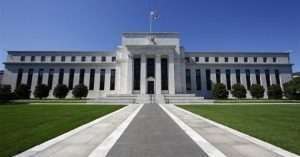
The Federal Reserve’s balance sheet rose to a record $6.42 trillion as the central bank soaked up on assets to prevent an economic collapse.
Since March, the Fed has cut interest rates, released stimulus programs, and resumed bond purchases to keep credit flowing and support businesses and households.
The central bank’s balance sheet rose $300 billion in addition to last week’s $6.13 trillion. In early March, the bank’s balance sheet was only $4.29 trillion.
The current balance sheet is now equivalent to almost 30% of the U.S. economy before the pandemic. The central bank proceeded to get Treasury mortgage bonds, securities, and other assets.
Treasury holdings increased to $3.79 trillion from $3.63 trillion, while the Fed’s holdings of mortgage-backed securities went up to $1.57 trillion from $1.46 trillion.
The Fed’s liquidity swap lines spiked to $378.3 billion, while its discount window dropped to $36.3 billion.
Loans with the central bank’s main dealer credit facility rose to $33.4 billion, while the money market mutual fund liquidity facility fell to $50.7 billion.
The Fed’s report on Thursday showed the first usage of the central bank’s support facility. The Commercial Paper Funding Facility II LLC showed $974 million holdings as of April 15.